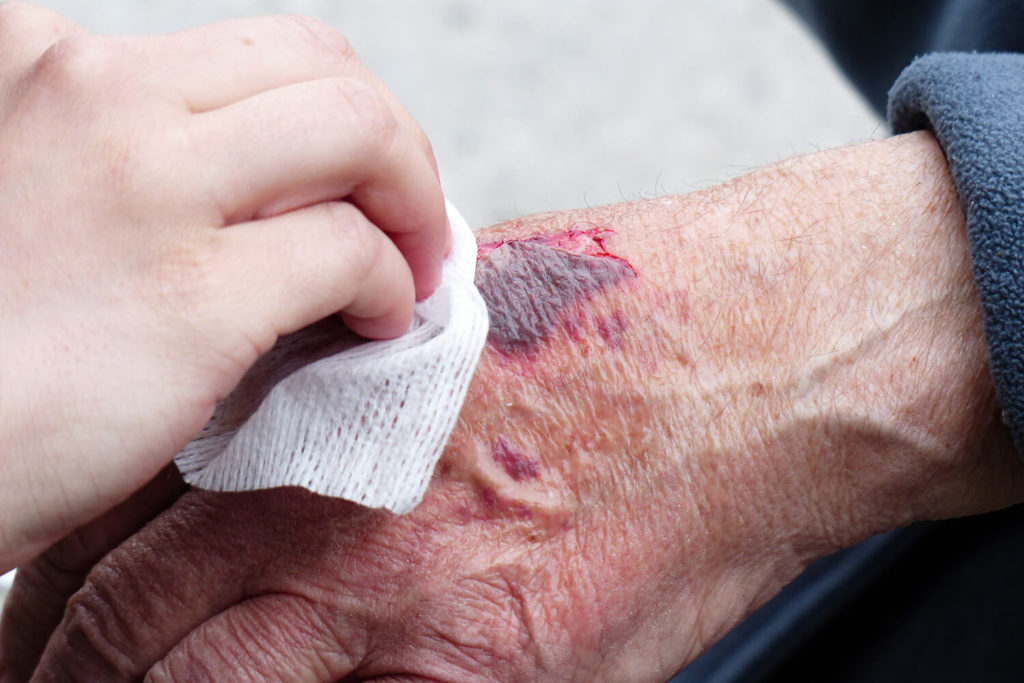In the Netherlands, the number of patients with chronic wounds is approximately 500.000 per year. Although the term chronic wound implies that it is a wound that remains forever, it concerns wounds that do not heal within the expected period. And the longer the wound exists, the longer it takes to heal completely. It is becoming increasingly clear that chronic wounds are becoming a major problem. And diabetes patients in particular suffer from this. Why? We will explain that.
Wound healing costs
At present, little attention is paid to the effect of chronic wounds in healthcare. Limited Dutch research has been conducted, while it can lead to serious health complications and skyrocketing healthcare costs. In the United States, research has been conducted through the social insurance program Medicare, which is mainly used by people over 65. Medicare is responsible for half of healthcare costs in the US. Chronic wounds now account for 15% of Medicare costs incurred. This is now estimated at no less than 30 billion dollars. The highest costs are caused by foot ulcers and infected or ruptured surgical wounds.
Diabetes and chronic wounds
Chronic wounds can arise simply because someone has diabetes. The blood of diabetes patients clots less quickly, which inhibits wound healing. People with diabetes often have wounds on their feet without causing any problems. They simply have less feeling in their feet, so the wounds go unnoticed. If a wound has not healed after 3 weeks, serious health complications can occur. In the long term, an unhealed foot wound can even lead to amputation.
Caution with other medications
Diabetics will need to be extra careful with other common factors that play a role in the poor wound healing process. For example, medications used for another condition can influence the healing process of the wound. Cytostatic is such a medicine. This medicine is used in people with cancer. It inhibits cell growth, which is essential to fight the tumor, but which also leads to slower healing of wounds. Corticosteroid (anti-inflammatory) is another medicine that inhibits wound healing. This medication is used for various conditions, such as allergies, autoimmune diseases and bronchitis. Other medications actually promote wound healing. Examples are antibiotics and products containing vitamins and minerals.
Avoidance of smoking
Lifestyle can also play a major role in the slow recovery of chronic wounds. As it turns out Danish research that wounds are more difficult to heal in smokers, because the oxygen transport from the blood to the wound is hindered by the carbon monoxide from the smoke. Smoking 1 cigarette causes 30% less oxygen uptake by the body tissues for an hour. In addition, the blood vessels are constricted by the nicotine. Smoking also leads to collagen damage. This protein is used by the body as a building block for connective tissue. Finally, it appears that smokers suffer from infected wounds 5 times more often than non-smokers.
Dietary pattern of diabetes patient
Diabetes patients should pay close attention to their diet because of their blood glucose levels. Records are kept of what is eaten and drunk and when exactly this is done. But it is not only because of blood glucose that diabetics will have to pay close attention to their diet. Foods are also important for the rapid healing of wounds. The body needs more energy (calories) for the healing process. This extra energy is obtained from sufficient carbohydrate intake. Proteins are essential when creating new wound tissue. Finally, vitamins and minerals are important to reduce the delay in wound recovery. For example, an iron deficiency leads to poorer absorption of oxygen from the blood.
New wound treatment technique
A lot of research is now being done into improving wound treatment. Smart bandages are being developed based on new techniques. This bandage is equipped with a sensor that continuously monitors the healing process of the wound. This is done, for example, on the basis of sound waves, electrodes or measurements of the temperature and pH value of the wound. The goal is to connect these sensors to a device, such as a smartphone, with which the patient immediately receives a signal if wound healing is inhibited. For example, initial tests show that some wounds heal within a few days instead of a few weeks. If it really turns out to work, it could make the life of the diabetes patient a lot more pleasant.


I am not being treated because of corona. I have been walking with a hole in my toe for a year now. How is this supposed to end... the pain is unbearable at night. And just pay. It's something to cry about.